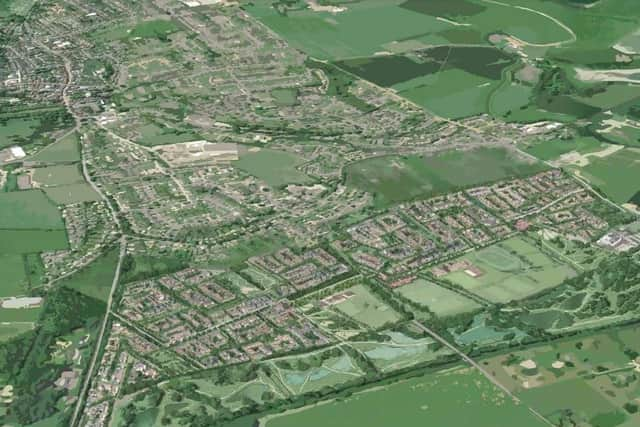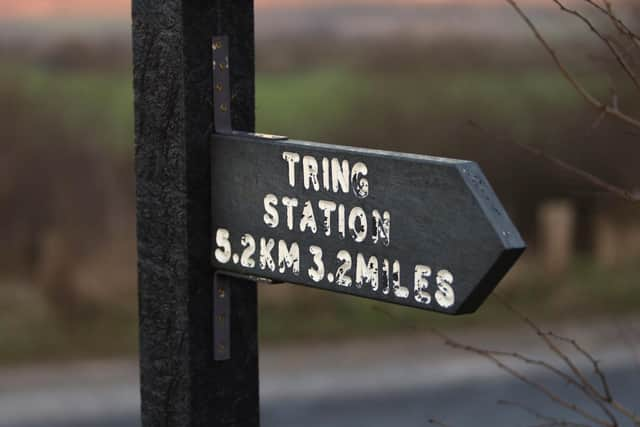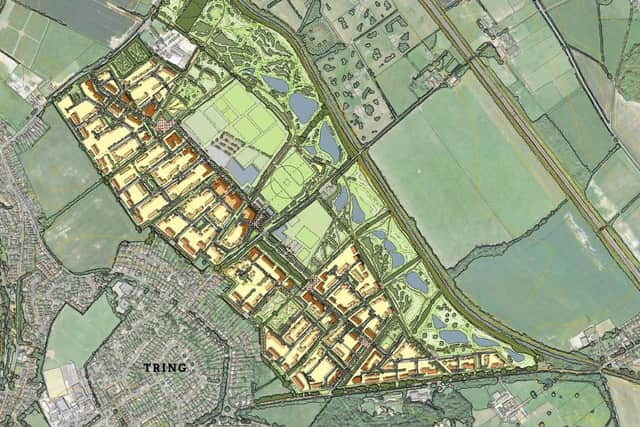Government rejects appeal for 1,400 home development at Tring due to environmental concerns
and live on Freeview channel 276
Housebuilders cannot fill the one-and-a-half-mile gap between Tring and the town’s railway station with up to 1,400 homes, Westminster has ruled.
Housing minister Felicity Buchan, on behalf of Levelling Up secretary Michael Gove, has turned down plans for the new homes following an inquiry last year.
Advertisement
Advertisement
In a letter dated March 15, 2024, the Department for Levelling Up, Housing and Communities (DLUHC) warned the project would “fail to conserve or improve the prevailing landscape quality, character and condition”.


FTSE 250 firm Redrow (RDW:LSE) and Harrow Estates had proposed a “garden suburb” extension to Tring with “a mix of housing, including affordable housing of different types, sizes and tenures, and self-build housing”.
The firms had also suggested carbon offsetting with two trees planted per home and a new country park next to the Grand Union Canal.
According to the letter, Mr Gove ruled “that the provision of up to 560 new market homes carries substantial weight”.
Advertisement
Advertisement
He found there is enough land in Dacorum to meet local housing needs with new homes for the next 2.06 years – less than half the five-year target set by DLUHC.


“He considers this housing land supply deficit is significant,” the letter reads.
“The council’s repeated failure to progress an up-to-date development plan that would meet its future housing need and to ensure the provision of sufficient sites is an important matter.”
Dacorum Borough Council last adopted a full local plan in 2004.
Advertisement
Advertisement
DLUHC also listed “the contribution of the future residents to the local labour force and local economy” among the possible scheme benefits, along with the provision of 140 extra care homes and land for education.


But decision-makers warned of adverse effects on the Chilterns National Landscape – formerly known as the Chilterns Area of Outstanding Natural Beauty (AONB) – with the loss of panoramic views.
“The proposal would fail to conserve the special qualities of the Chilterns AONB,” the letter notes.
It adds the proposal “would result in significant harm to green belt purpose ‘a’ to check the unrestricted sprawl of large built-up areas and green belt purpose ‘c’ to assist in safeguarding the countryside from encroachment”.
Advertisement
Advertisement
Up to 1,400 new homes “would have a significant adverse effect on the openness of the green belt and the purposes of including land in the green belt”.
In a weighing-up exercise, ministers found “the other considerations, in this case, do not clearly outweigh the harm to the green belt and the other identified harms relating to the impact on character and appearance, setting of the AONB, harm to designated and non-designated heritage assets and loss of agricultural land”.
Mr Gove “therefore considers that very special circumstances do not exist to justify this development in the green belt”.
Inspector urged ministers to grant permission
Ministers’ decision to refuse planning permission goes against the recommendation by the inspector, Martin Whitehead.
Advertisement
Advertisement
He had recommended that ministers allow the appeal and grant planning permission.
In his report, Mr Whitehead wrote: “The harm to the green belt, which includes harm due to inappropriateness, carries substantial weight.”
Mr Whitehead added he had considered the case for market housing, affordable housing, self and custom-build housing, extra care housing and socioeconomic benefits.
“I find that the proposal would result in a significant boost to new housing in the borough which I am satisfied would be capable of contributing to the five-year housing land supply that the council has been unable to demonstrate it can meet,” he wrote.
Advertisement
Advertisement
“I find that the other considerations in this case clearly outweigh the harm that I have identified.
“Looking at this case as a whole, I consider that very special circumstances exist which justify the development.”
During the 2023 inquiry, Christopher Young KC on behalf of the developers said: “Tring is a community in which new families moved in significant numbers in the 1960s and 1970s.
“But it seems those who live in those properties, and other people in the town, do not want the same for present generations.
Advertisement
Advertisement
“Indeed, there has been a dearth of new housing development since that era.
“As a consequence, Tring has some catching up to do.”
But Joe Thomas, a barrister on behalf of the Combined Objectors’ Group – comprising the Campaign to Protect Rural England Hertfordshire, The Chiltern Society and the Grove Fields Residents Association – said: “The green belt is for many a manifestation of our better selves – forsaking the immediate desire to develop to ensure that there is open space for future generations.”
Dacorum Borough Council had previously refused the application before developers lodged their appeal with the government’s Planning Inspectorate.
Simon Bird KC, defending the authority’s position, warned decision-makers to avoid the “death of the green belt by a thousand cuts”.